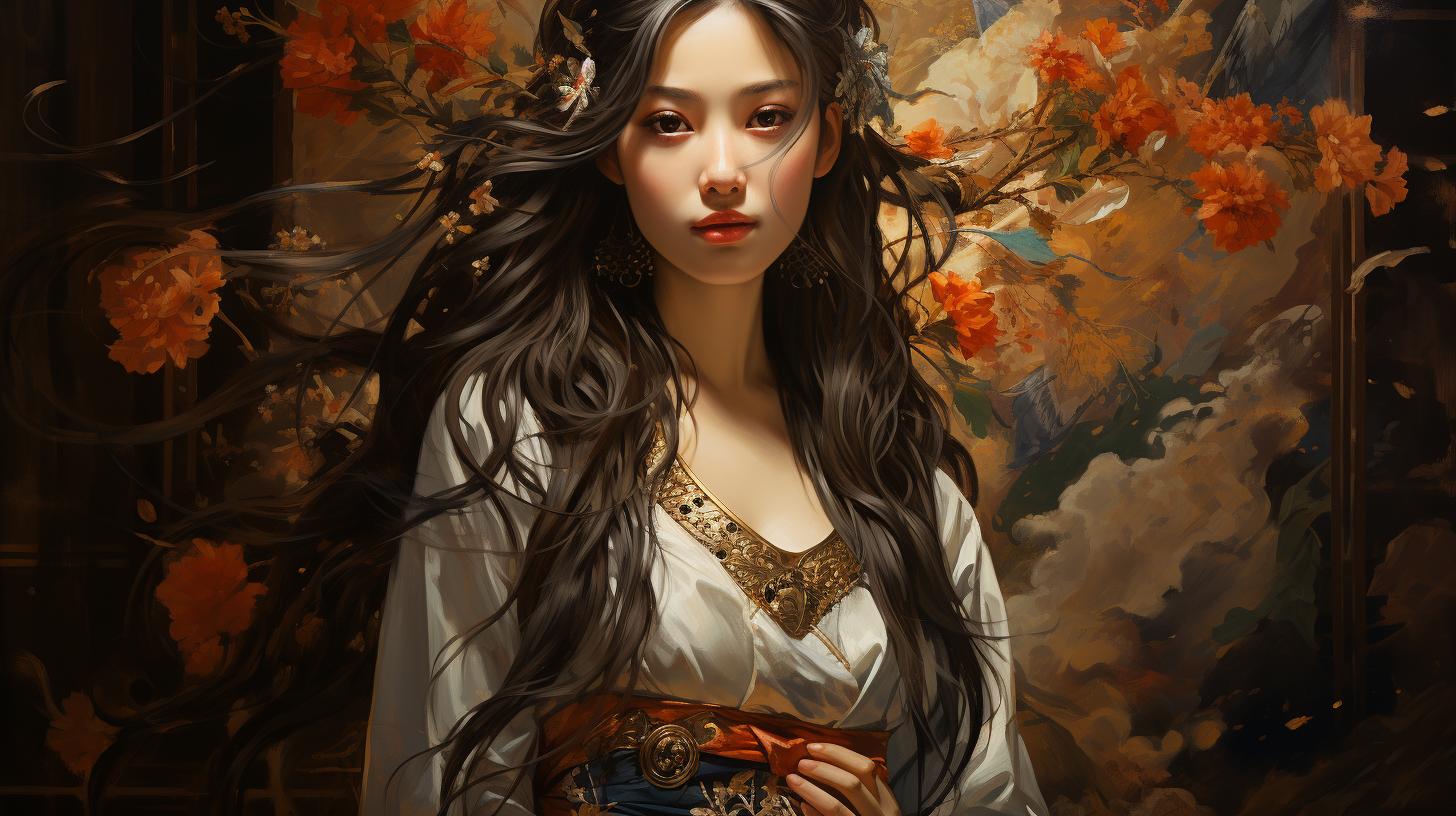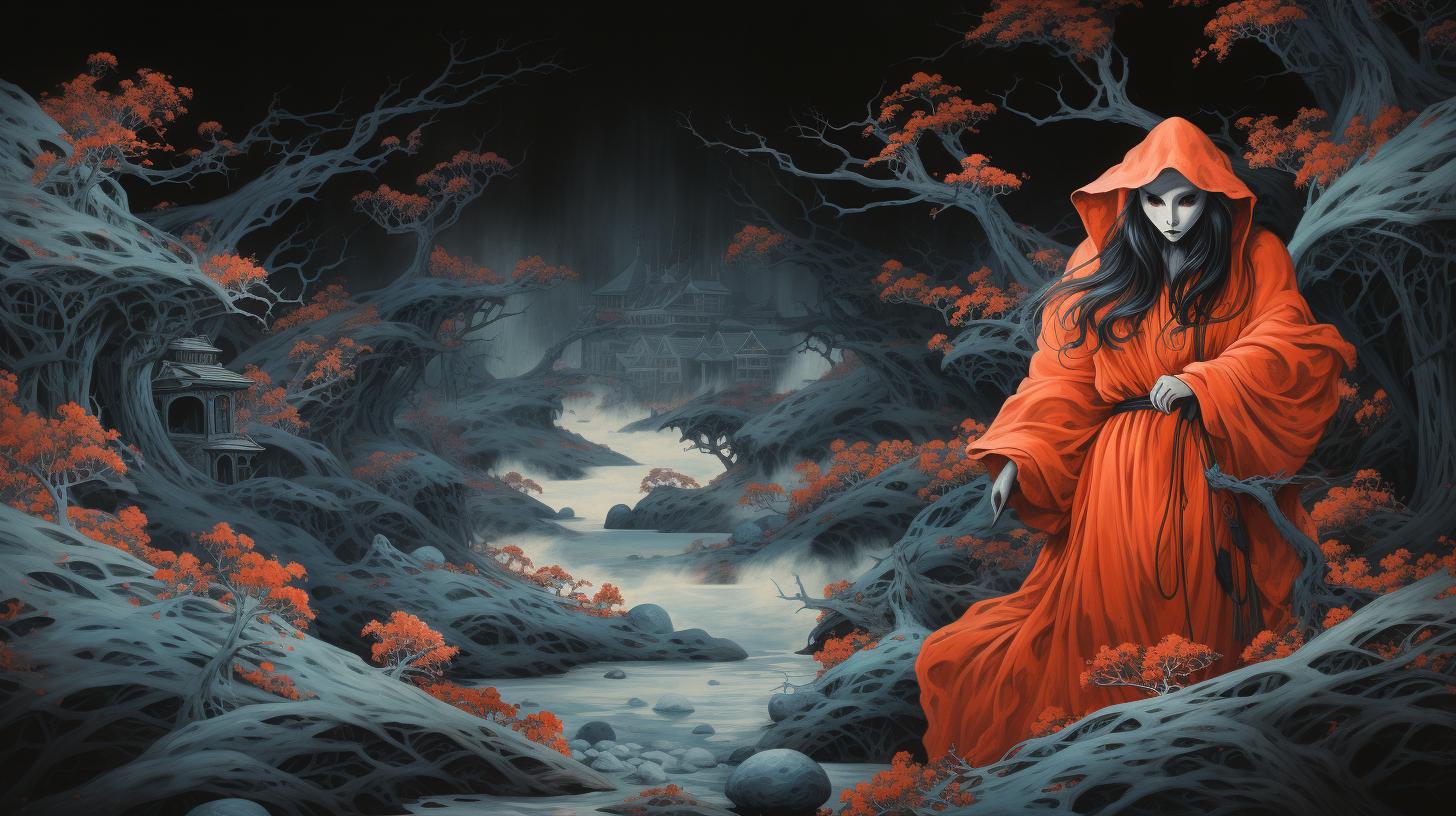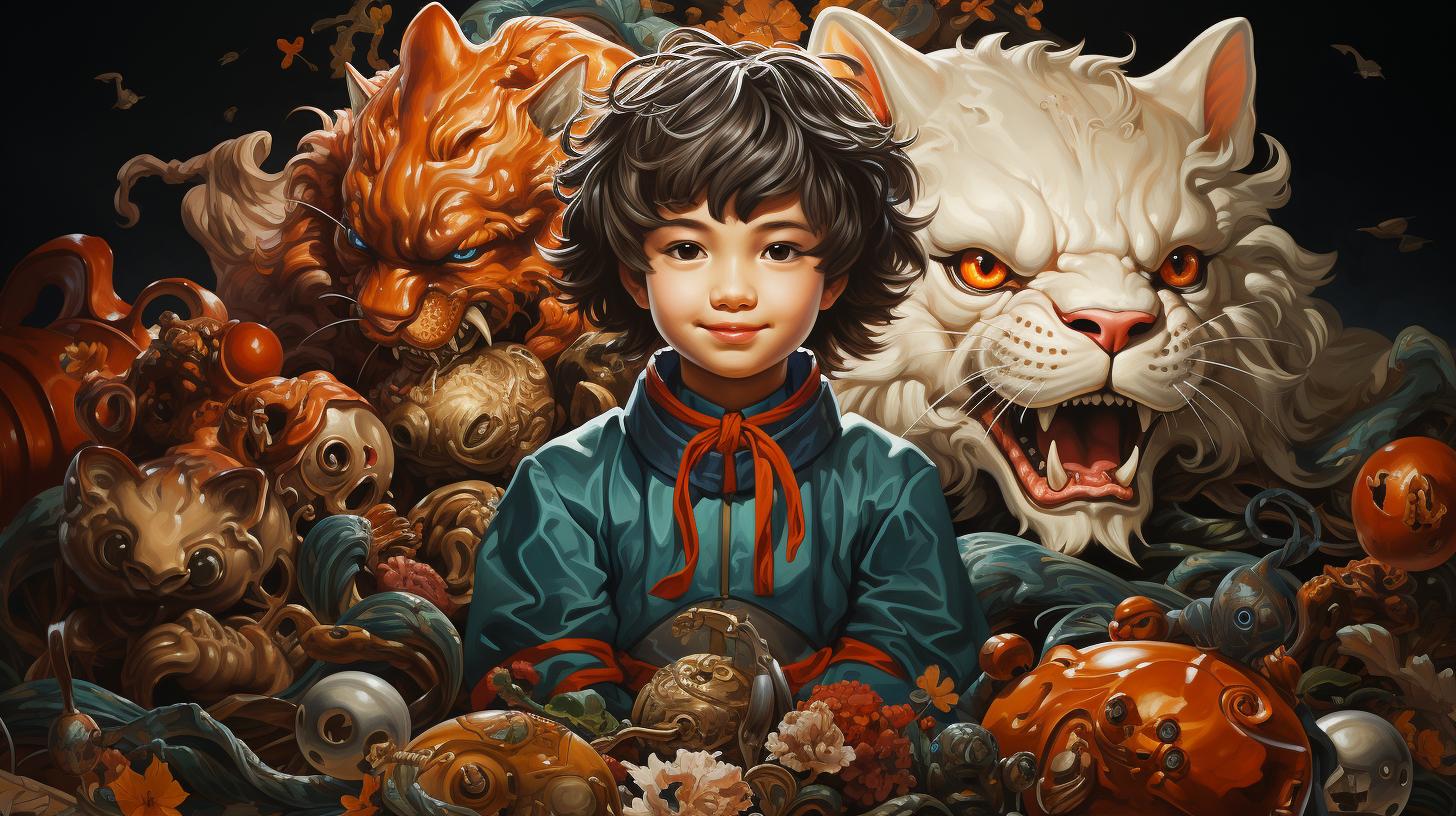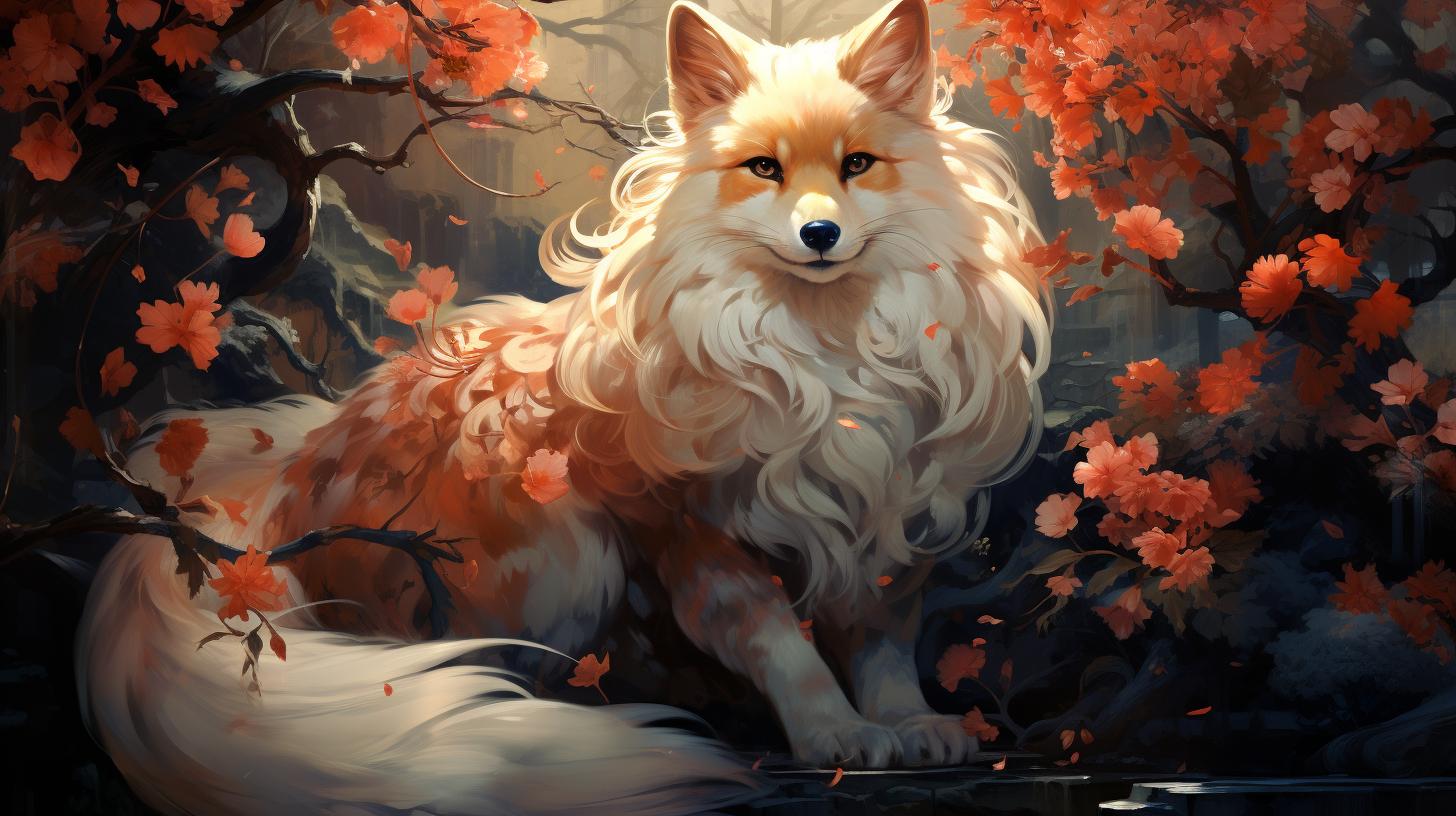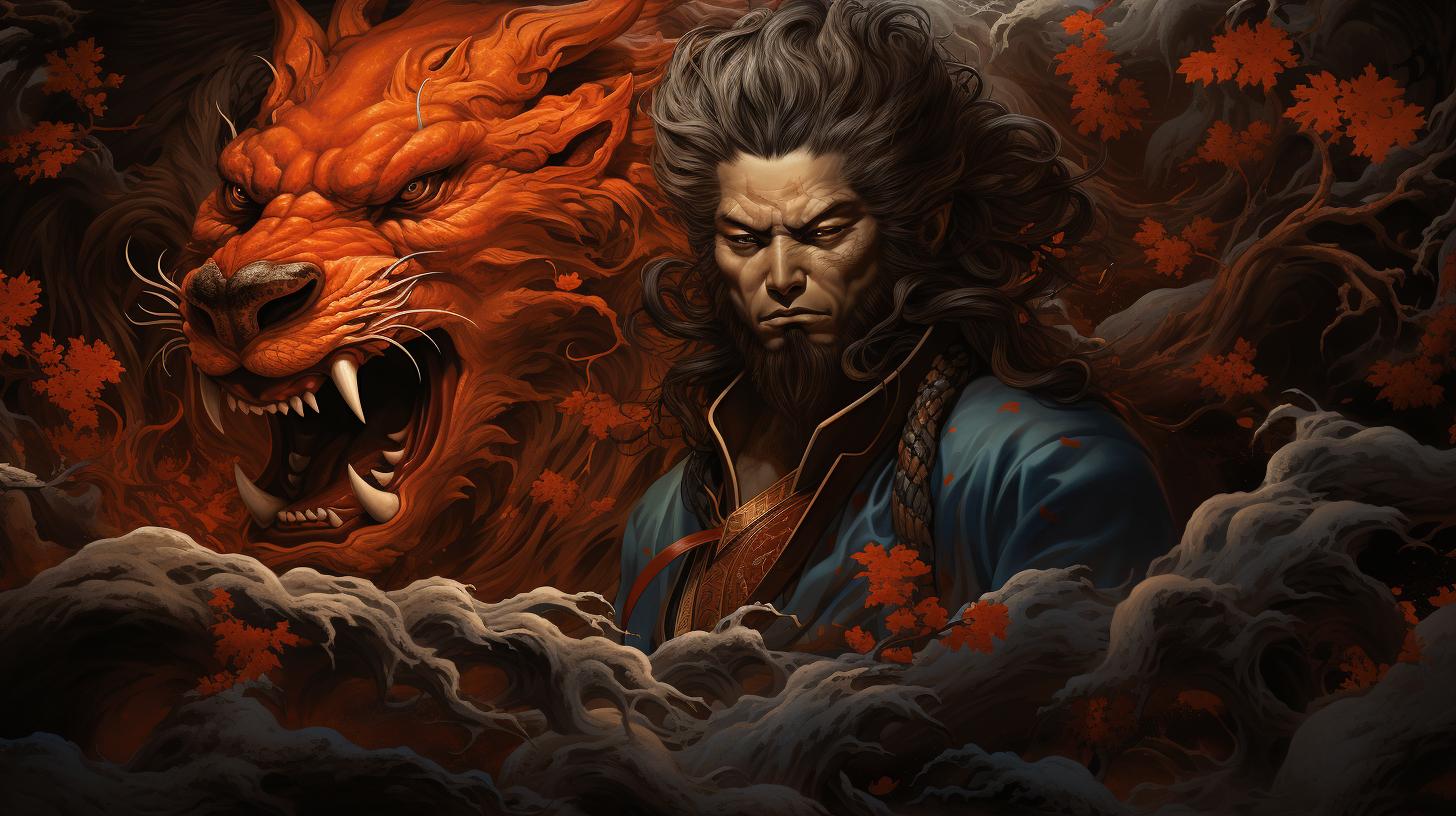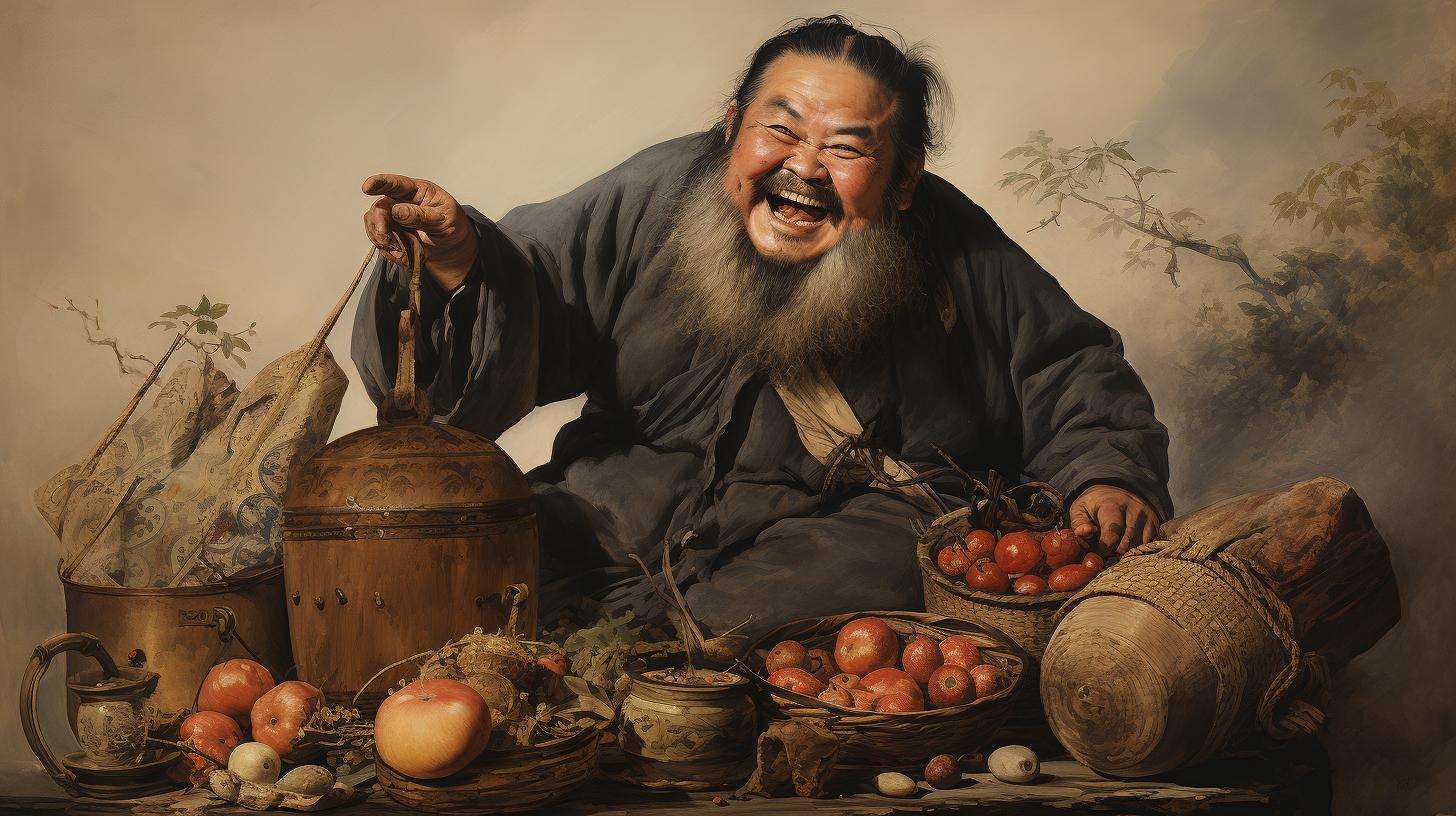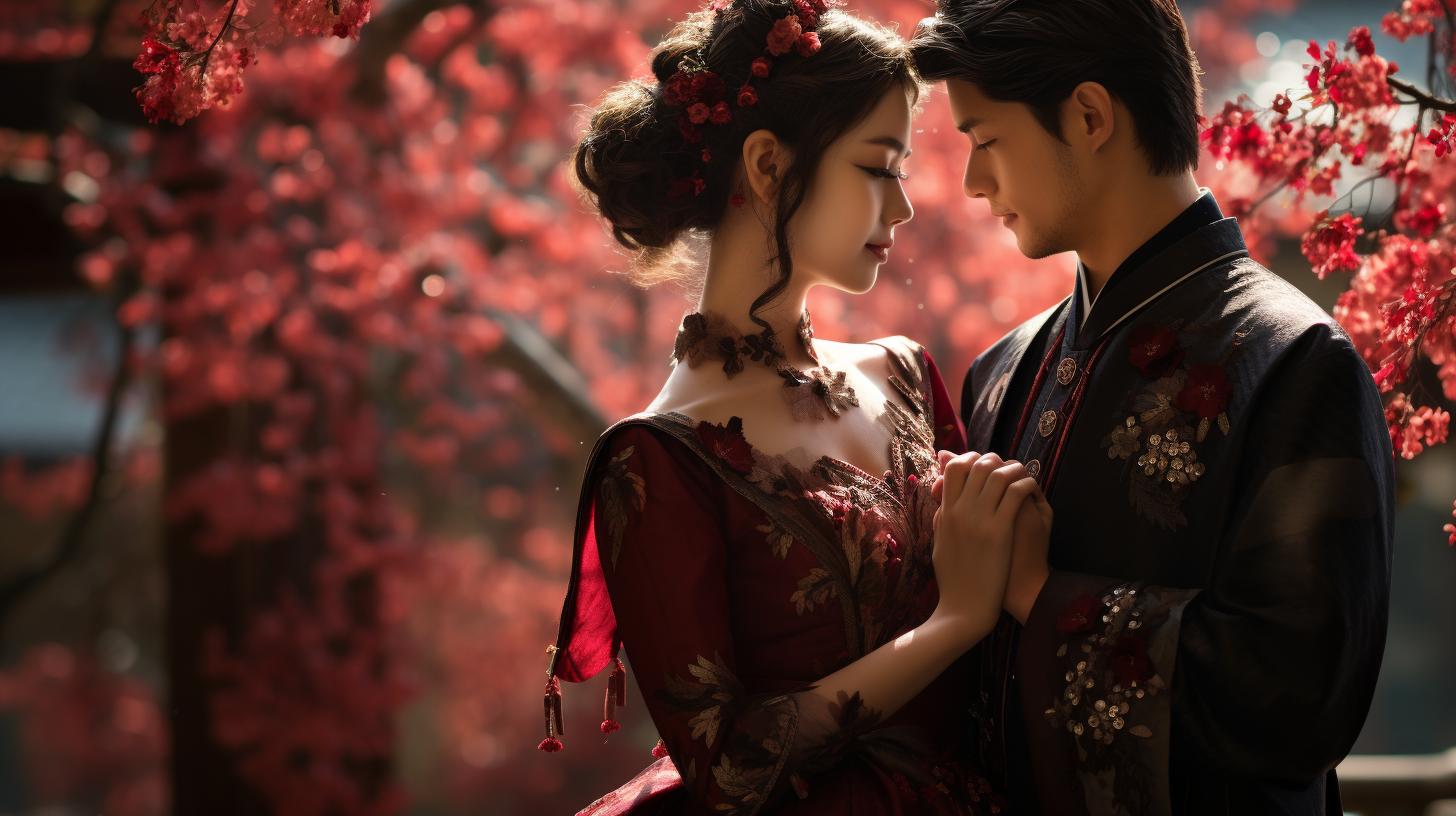Exploring the Mystical World of Kannon Japanese Mythology: A Comprehensive Guide
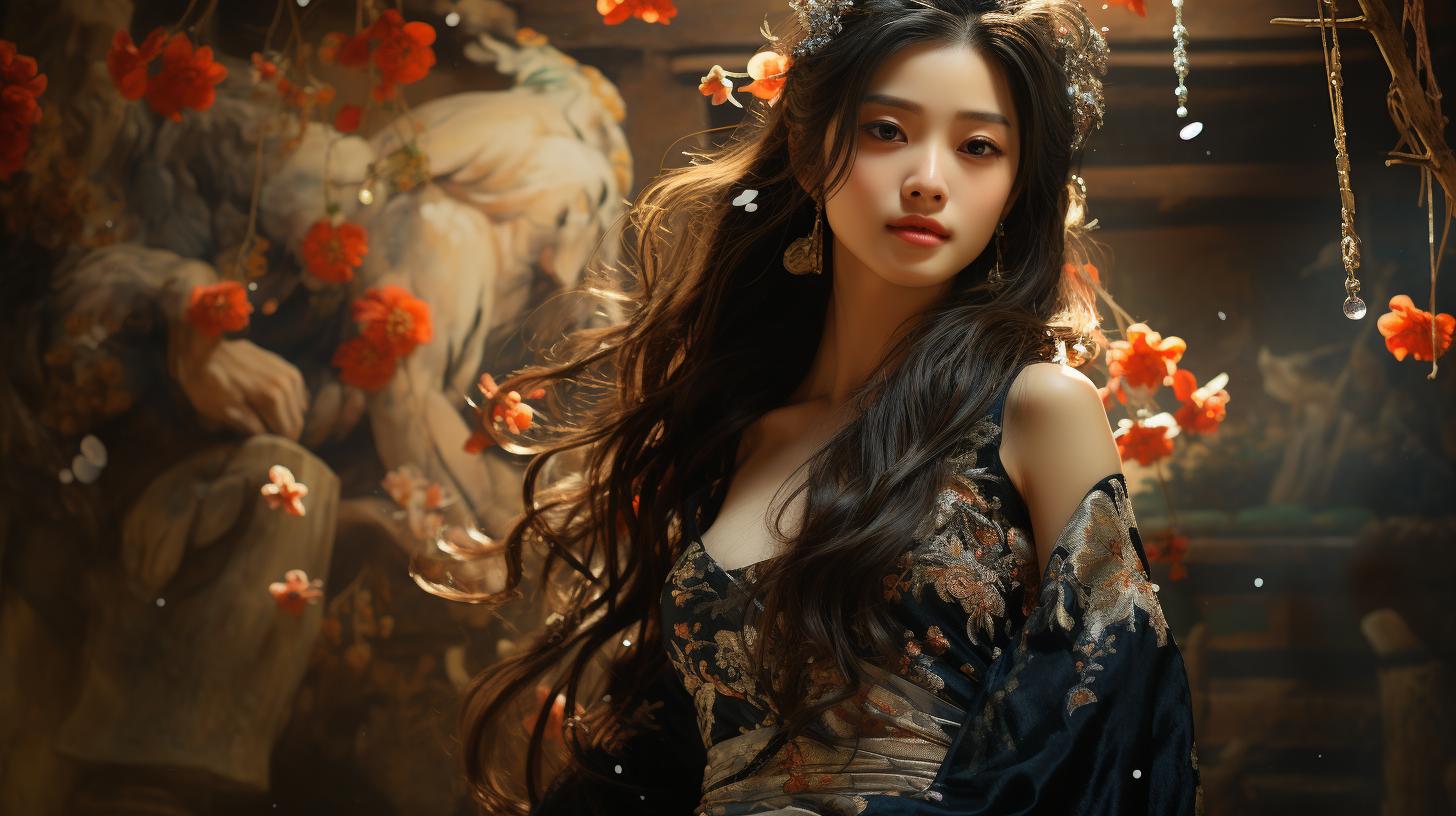
Kannon Japanese mythology is a fascinating topic that explores the origins, many forms, and cultural significance of one of the most popular bodhisattvas in Japan. With temples and shrines dedicated to Kannon in every corner of the country, her influence on Japanese art, sculpture and religion is undeniable.
Whether you’re interested in history, culture, or simply curious about the mystical world of Kannon, this comprehensive guide will take you on a journey of discovery that will bring you closer to the essence of Japanese mythology.
What is Kannon Japanese Mythology?
Kannon Japanese Mythology is a fascinating and complex topic that spans centuries of history and religion. It centers around Kannon, a widely revered female Buddhist deity who is known for her compassionate and merciful nature.
In this section, we will explore the origins of Kannon, her role in Japanese mythology, and the many forms she can take on.
The Origins of Kannon
Kannon originated in India and arrived in Japan at least by the seventh century. Over time, she became widely-known throughout the country and was incorporated into various Japanese religious traditions. While there are different versions of her origin story, many sources cite her as a Buddhist bodhisattva who vows to help others achieve enlightenment.
The Role of Kannon in Japanese Mythology
Kannon plays a significant role in Japanese mythology as a symbol of compassion, mercy, and aid. She is often regarded as a protector of women and children, as well as a patron of seafarers.
Legend has it that those who call upon her can receive her help and blessings, making her a beloved figure for many.
The Many Forms of Kannon
Kannon can take on thirty-three different forms, each representing a unique aspect of her power and personality. Some of the most well-known forms include the thousand-armed Kannon and the horse-headed Kannon.
Each form has its own unique name and characteristics, making Kannon a versatile and dynamic figure in Japanese mythology.
The Significance of the Magic Jewel
The magic jewel, or nyoihoju, is a common feature in depictions of Kannon. It is said to represent her ability to grant wishes and confer blessings upon those who seek her aid.
It is also a symbol of her power over the elements and her ability to bring tranquility to the world.
The Cultural Significance of Kannon in Japan
Kannon is one of the most well-known and widely-revered Buddhist deities in Japan. Throughout history, Kannon has played an important role in Japanese art, religion, and culture, serving as a symbol of compassion and mercy.
Below, we explore the cultural significance of Kannon in Japan, delving into her representation in art and sculpture, her role in Japanese Buddhism, and the importance of Kannon statues and artwork.
Kannon in Japanese Art
Kannon has been depicted in various forms throughout Japanese art, from traditional woodblock prints to contemporary manga comics. Kannon’s many forms provide endless inspiration to Japanese artists, who often create elaborate and intricate sculptures and paintings that showcase her many attributes and powers.
Examples of Kannon Artwork in Japan
- Sensoji Temple in Tokyo is home to a stunning statue of the Thousand-Armed Kannon
- The Hokke-ji Temple in Nara is known for its beautiful Thousand-Armed Kannon statue
- The Hasedera Temple in Kamakura is home to a magnificent statue of the Eleven-Headed Kannon
Kannon in Japanese Religion
As a bodhisattva and embodiment of compassion and mercy, Kannon holds an important place in Japanese Buddhism.
Many Japanese Buddhists turn to Kannon for protection and guidance in times of need. Kannon is said to have the power to answer prayers and perform miracles, making her a beloved figure in Japanese religious culture.
Examples of Kannon in Japanese Religious Practice
- Worshippers often recite the ‘Kanzeon Sutra’, a prayer dedicated to Kannon
- Many temples and shrines throughout Japan feature Kannon figures and enshrine halls dedicated to her
Kannon as a Symbol of Compassion and Mercy
Kannon is often depicted as a compassionate figure who cares deeply for all living beings.
As a symbol of mercy, Kannon inspires many Japanese people to lead lives of compassion and kindness towards others.
Examples of Kannon’s Influence on Japanese Culture
- Japanese school children are often taught about Kannon’s compassionate nature and encouraged to emulate it in their daily lives
- Kannon’s influence can also be seen in Japanese pop culture, where she is often portrayed as a powerful heroine who helps those in need
The Importance of Kannon Statues and Artwork
Throughout Japan, Kannon statues and artwork serve as important religious and cultural landmarks.
These beautiful and intricate works of art showcase Kannon’s many forms and attributes, inspiring awe and reverence in all who see them.
Examples of the Role of Kannon Statues in Japanese Culture
- The Kuon-ji Temple in Kyoto is home to a unique statue of a pregnant Kannon, representing the bodhisattva’s ability to give birth to compassion and mercy
- The Sanjusangendo Temple in Kyoto features a famous statue of the Thousand-Armed Kannon, which is one of the most impressive sculptures in all of Japan
The cultural significance of Kannon in Japan cannot be overstated.
From her origins in Indian Buddhism to her enduring popularity in Japanese culture, Kannon remains a beloved figure who inspires devotion and worship across generations of Japanese people.
Exploring the Many Forms of Kannon
As previously mentioned, Kannon can take on a variety of forms, each representing a different aspect of her character and role in Japanese mythology. We will explore four of the most notable forms below.
The Thousand-Armed Kannon
Known in Japanese as Senju Kannon, this form of Kannon is depicted with multiple arms, each holding a different object. The thousand arms represent her ability to help countless people at once, and the objects represent various means of attaining enlightenment.
For example, one arm may hold a lotus flower, symbolizing purity and spiritual growth, while another may hold a trident, symbolizing the destruction of ignorance and evil. This form of Kannon is often depicted in large statues that are several meters high, and is a popular subject of worship and meditation.
The Horse-Headed Kannon
Known in Japanese as Baekon Kannon, this form of Kannon has the head of a horse and is believed to protect horses and travelers. In Japanese mythology, horses were considered sacred animals, and this form of Kannon is seen as a guardian of these animals and those who rely on them for transportation.
The horse-headed Kannon is also sometimes associated with fertility and childbirth, as horses were believed to be able to conceive and give birth quickly and easily.
The Virgin Kannon
Known in Japanese as Seibo Kannon, this form of Kannon is depicted as a young, beautiful woman holding a baby. She is believed to be a protector of children, especially those who are sick or in danger.
The baby she holds is often identified as the infant Buddha, symbolizing her role as a nurturer and guide to enlightenment. Unlike other forms of Kannon, the Virgin Kannon is not associated with specific objects or animals, but rather with the qualities of purity, innocence, and maternal love.
Guanyin and the Relationship with Kannon
While Kannon is a bodhisattva in Japanese Buddhism, she is also recognized in Chinese Buddhism as Guanyin. The two figures share many similarities, including their role as the Bodhisattva of Compassion and their ability to take on multiple forms.
However, there are also some differences between the two, such as the fact that Guanyin is sometimes depicted as a male figure, whereas Kannon is usually depicted as female. Despite these differences, the relationship between Kannon and Guanyin is an important aspect of both Japanese and Chinese Buddhism, and their shared legacy continues to inspire people around the world.
Discovering Kannon Throughout Japan
Temples and Shrines Dedicated to Kannon
Japan is home to numerous temples and shrines dedicated to Kannon, each with its unique charm and history. One of the most well-known is the Sanjusangendo Temple in Kyoto, which houses a remarkable statue of Kannon with a thousand arms.
Another popular destination is the Byodo-in Temple in Uji, not far from Kyoto, which features a beautiful hall adorned with Kannon artwork. These temples and shrines make great places for visitors to connect with the culture and traditions of Japan, while learning more about the significance of Kannon in Japanese mythology.
The Most Prominent Kannon Statues and Artwork in Japan
From majestic sculptures to intricate paintings and carvings, Kannon artwork is ubiquitous in Japan. Some of the most prominent Kannon statues and artwork can be found in Tokyo’s Sensoji Temple, which features a towering Kannon statue standing over 13 meters tall.
Those who visit the ancient city of Nara will also be entranced by the Great Buddha Hall at Todaiji Temple, which houses a large bronze statue of Kannon.
Plan Your Trip to Explore Kannon and Japanese Culture
Whether you’re interested in visiting sacred sites, admiring artwork, or simply soaking up the atmosphere of Japan, planning a trip centered around Kannon and Japanese culture is a great way to explore all of the country’s wonders.
Along with visiting temples and shrines, you could also attend a traditional tea ceremony, visit a sumo wrestling match, or indulge in some delicious Japanese cuisine. Many travel agencies offer customized trips for tourists keen on exploring Kannon-specific destinations, as well as other cultural highlights of Japan.
Events and Festivals Celebrating Kannon and Japanese Culture
Throughout the year, Japan celebrates a variety of events and festivals dedicated to Kannon and Japanese culture. Some of the most popular include the Toka Ebisu Festival in Osaka, held in mid-January to celebrate the new year and the deity Ebisu, whom many Japanese people believe is closely associated with Kannon.
Another notable annual event is the Kannon Festival held at Nakayama Temple in Kawasaki, which features vibrant parades, live music, and delicious street food. No matter the season, there is always something exciting happening in Japan that celebrates the country’s rich cultural heritage, particularly that surrounding Kannon Japanese mythology.
Learning More About Kannon Japanese Mythology
Kannon is a fascinating figure in Japanese mythology, and there is much to learn about her role in Japanese art, religion, and culture.
Fascinating Facts About Kannon and Japanese Mythology
- Kannon is one of the most widely-revered bodhisattvas in Japan, with temples and shrines dedicated to her throughout the country.
- While typically depicted as female, Kannon can take on many forms, including a thousand-armed version, a horse-headed version, and even a male version called Kanzeon.
- Kannon is known for her compassion and mercy, and is often portrayed holding a magic jewel, or nyoihoju, which is said to grant wishes.
- In addition to being a Buddhist figure, Kannon has also been incorporated into Shintoism, Japan’s indigenous religion.
The Role of Kannon in Buddhism and Japanese Culture
Kannon holds an important place in Japanese religion and culture, serving as a symbol of compassion and mercy.
As a bodhisattva, Kannon is dedicated to helping others achieve enlightenment and compassion. Her popularity in Japan speaks to the country’s cultural values of empathy and benevolence, and she is often associated with the ideal of selfless love.
Exploring Kannon’s Influence on Japanese Art and Sculpture
Kannon has had a profound influence on Japanese art and sculpture, with countless works dedicated to her throughout the country. Her image is often depicted in a variety of forms– from traditional sculptures to contemporary paintings– and her popularity among artists and sculptors is a testament to her enduring appeal.
Arms and Heads: The Meaning Behind Kannon’s Multiple Forms
- The thousand-armed version of Kannon is said to represent the many ways in which she can help people, with each hand capable of a different task.
- The horse-headed version of Kannon is believed to have originated in India as a protector deity, and was later incorporated into Japanese mythology.
- The male version of Kannon, Kanzeon, is sometimes depicted with both male and female attributes, demonstrating the bodhisattva’s ability to transcend gender.
Exploring Kannon Japanese mythology is a fascinating journey into the heart of Japanese religion and culture.
Whether exploring Kannon’s many forms, or delving into the significance of her image in Japanese art and sculpture, there is much to learn and appreciate about this beloved figure….

